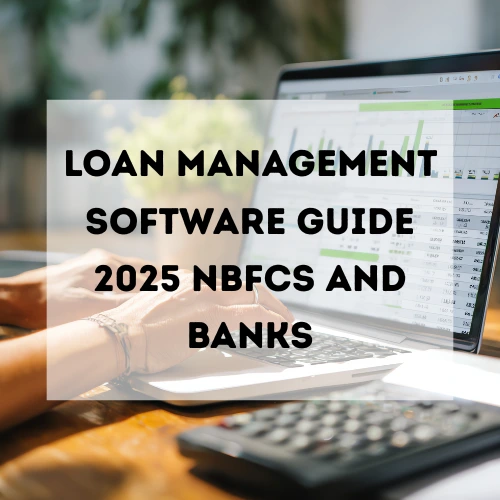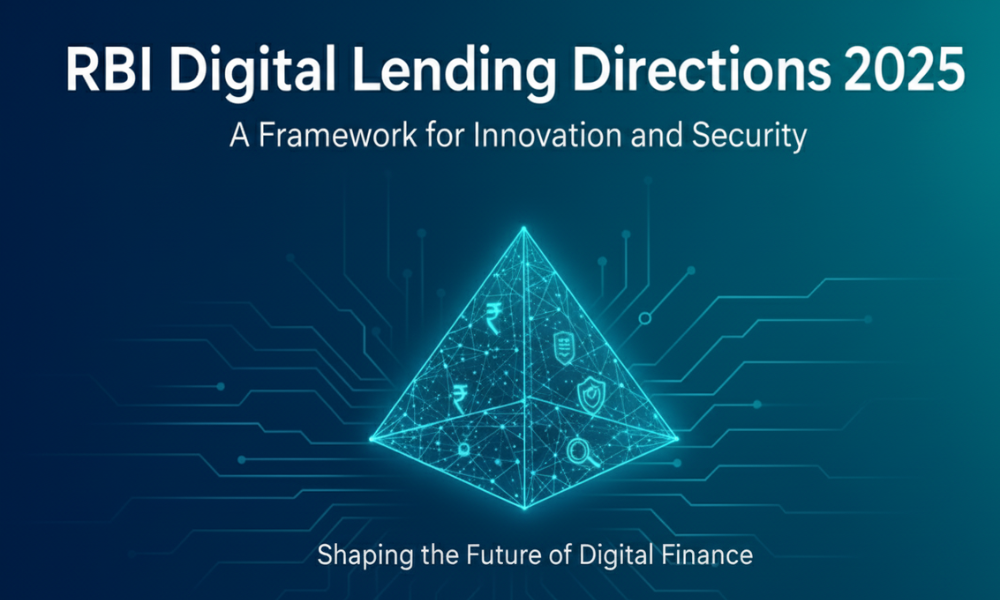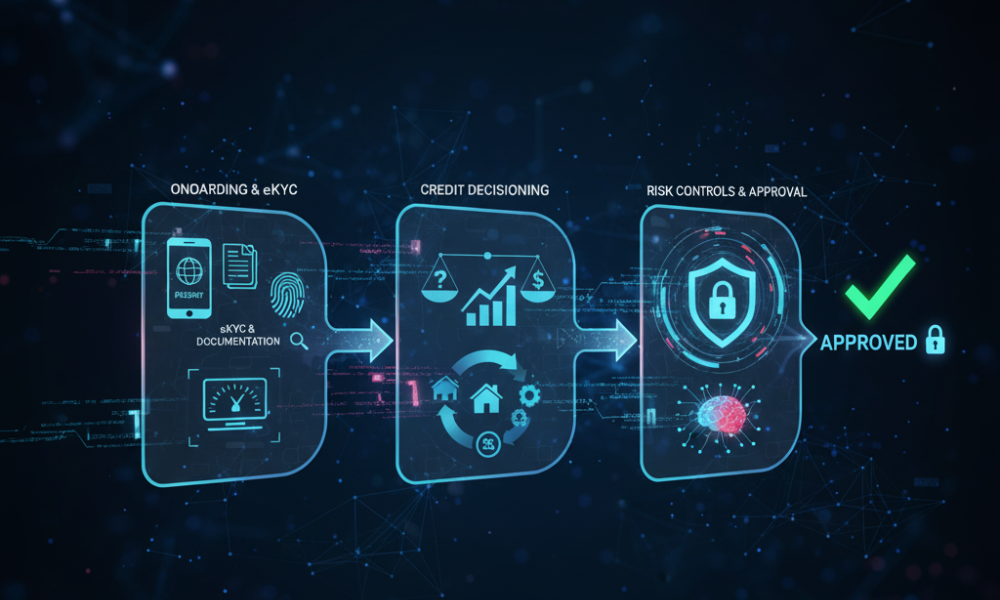
Loan Management Software Guide 2025 | NBFCs & Banks—discover must-have features, RBI Digital Lending Directions 2025 changes, AI-driven underwriting, eKYC, and open banking integrations for faster, compliant lending. Actionable insights for CIOs, COOs, and credit heads.
In 2025, lending leaders are prioritizing speed, compliance, and portfolio quality—and the right loan management software (LMS) is the operating system that makes it happen for both NBFCs and banks. This Loan Management Software Guide 2025 | NBFCs & Banks explains the latest trends, RBI changes, essential modules, and a practical selection checklist so decision-makers can deploy systems that scale from lead to loan to ledger with confidence. Expect a clear view on AI-driven decisioning, eKYC, open APIs, and how to align with the RBI’s Digital Lending Directions 2025 without slowing growth.
Why this guide matters
Competition tightened—NBFCs and banks expanding to MSMEs and new-to-credit segments need configurable rules engines, robust collections workflows, and open banking connectivity to win.
Regulations changed in 2025, and lenders must adjust digital journeys, disclosures, and partner oversight to stay compliant while maintaining conversion rates and unit economics.
Technology moved fast—AI credit models, bank-statement analytics, and GST verification are now baseline expectations for risk and speed in Indian lending.
Market shifts in 2025
Cloud-first deployments with mobile origination and role-based dashboards are standard, enabling distributed teams, DSAs, and field collections at scale.
Connected lending via open APIs and partner ecosystems is accelerating implementation and improving underwriting completeness across data sources in India.
AI is moving beyond pilots into production—powering risk scoring, income inference, and personalized offers that reduce TAT and improve approval precision.
RBI Digital Lending Directions 2025: what changed
- The 2025 Directions consolidate 2022 rules and 2023 DLG guidance, tightening disclosure, governance of LSPs, data processing, and multi-lender arrangements.
- Platforms must display all matched offers, disclose unmatched REs, and provide a documented, fair matching methodology with clear Key Fact Statement (KFS) details.
- REs must register their digital lending apps in the RBI’s CIMS portal and adhere to transparency norms in aggregation of loan products across lenders.
Tip: Ensure LMS supports templated KFS, lender attribution, consent logs, and auditable workflows for LSP integrations to pass compliance reviews without manual work.

Must‑have LMS capabilities for NBFCs & banks
- End‑to‑end origination to collections: Application, eKYC, decisioning, disbursal, servicing, restructuring, and NPA/collections in one flow with audit trails.
- Rules and scorecard engines: Configurable policy rules, DLG-aware partner logic, bureau and alt‑data fusion, and challenger models for continuous improvement.
- AI‑assisted underwriting: Income estimation, fraud flags, dynamic limits, and segment‑level pricing with explainability for credit and audit teams.
- eKYC and onboarding: Aadhaar‑based verification, video KYC, PAN/GST checks, and document mapping to reduce drop‑offs and fraud.
- Bank‑statement and GST analytics: Automated cash‑flow analysis, seasonality flags, GST return verification, and risk alerts for MSME and self‑employed segments.
- Open API architecture: Faster integrations with bureaus, payments, accounting, eNACH, eSign, eMandate, and partner channels.
- Role‑based dashboards and mobility: DSA, RM, credit, risk, and collections views with mobile origination and geo‑context for field teams.
- Collateral and facility management: Flexible definitions, revaluation workflows, and collateral ratings to manage secured lending at scale.
- Compliance automation: KFS generation, consent capture, data minimisation, grievance tracking, and LSP oversight aligned to 2025 rules.
2025 trends shaping LMS roadmaps
- Smart automation with AI: Faster credit decisions, targeted borrower experiences, and mobile-enabled lending with real-time analytics as standard.
- Open banking ecosystems: API‑driven onboarding and servicing that unify data across partners to reduce TAT and improve risk segmentation.
- Personalisation at scale: Offer orchestration, cross‑sell, and lifecycle nudges tailored by behavioural data to reduce churn and roll rates.
- Stronger governance: Tighter controls on LSPs, default‑loss guarantees, and multi‑lender platforms, with auditable logs and disclosures.
- MSME growth focus: NBFCs plan double‑digit lending expansion, requiring robust cash‑flow underwriting and GST + bank data fusion.
Feature deep dive: underwriting and onboarding
- Credit decisioning: Combine bureau data with alternative signals—bank flows, GST, utility payments—to improve approvals without raising loss rates.
- eKYC and documentation: Automate PAN/Aadhaar verification, video KYC, and document mapping for faster TAT and lower fraud risk.
- Risk controls: Proprietary rule engines, internal scoring, and early warning signals reduce defaults and concentrate efforts where they matter.

Servicing, collections, and NPA control
- EMI automation: eMandate/eNACH integration with reminders, grace logic, and dynamic retry strategies to lift on‑time performance.
- Collections workflows: Segmented strategies, field apps, location intelligence, and legal handoffs with full auditability improve recovery cycles.
- Restructuring and hardship: Policy-driven restructuring and forbearance flows with regulatory reporting help manage stress prudently.
Compliance checklist aligned to 2025 rules
- Disclosures: Auto‑generate KFS with APR, charges, penalties, and lender identity at the pre‑offer stage and maintain immutable logs.
- Aggregators: Display all matched offers and list unmatched REs with consistent, documented matching criteria across borrowers.
- App registry: Ensure all DLAs are reported via RBI’s CIMS portal; keep metadata synced during app updates and partner changes.
- Data and consent: Enforce purpose limitation, retention controls, and user consent capture for each data call, including LSP data flows.
Build vs buy vs hybrid
- Buy: Faster time‑to‑market with pre‑built origination, decisioning, and collections; ensure localization and RBI‑aligned compliance out of the box.
- Build: Maximum control for large banks or specialized NBFCs, but requires strong product, risk, and compliance engineering bandwidth.
- Hybrid: Use a configurable LMS with custom microservices for specialized scoring, pricing, or product logic where needed.
Vendor selection matrix
- Regulatory coverage: Support for RBI 2025 Directions, KFS, aggregation transparency, and CIMS reporting.
- Decisioning depth: Native rules engine, challenger models, and explainable AI scorers with bureau and alt‑data connectors.
- Ecosystem integrations: Bureaus, eKYC, eSign, eNACH, GST, payments, accounting, and LOS/LAS interoperability via open APIs.
- Operational fit: Role‑based dashboards, DSA tools, field mobility, and collateral workflows for secured and unsecured credit.
- India readiness: Localisation for compliance, tax, language, and reporting with proven deployments in Indian segments.
Emerging use cases to watch
Multi‑lender marketplaces with transparent offer comparison and auditable matching logic to meet RBI requirements.
Tier‑2/3 MSME lending with GST + bank flow underwriting, reducing dependency on collateral while maintaining portfolio health.
New‑to‑credit onboarding with thin‑file signals, behavioural scoring, and graduated credit lines to expand inclusion responsibly.
Frequently searched phrases to include naturally
Digital lending software India, eKYC for NBFCs, AI underwriting India, loan origination system 2025, RBI digital lending guidelines, MSME lending software, bank statement analyser, GST verification for lending, collections automation, open banking APIs India.
Conclusion and next steps
The bottom line: a modern, compliant LMS in 2025 should combine AI‑driven decisioning, eKYC, open APIs, and rigorous governance to deliver faster disbursals with stronger controls for NBFCs and banks. Map current journeys against the RBI Digital Lending Directions 2025, close gaps in disclosures and partner oversight, and invest in a rules‑first architecture that scales across products and channels. For leadership teams, the next move is clear—run a 30‑day pilot with a short‑list of vendors, validate TAT, approval, and PAR metrics, and standardize on the platform that proves both speed and compliance in production.
Call to action: Ready to modernize lending without compliance headaches? Build a pilot charter aligned to the RBI 2025 Directions, shortlist partners with proven India deployments, and kick off within this quarter to lock in growth for FY26




5 replies on “Loan Management Software Guide 2025 | NBFCs & Banks”
[…] why choosing the right tool — loan management software or spreadsheets — isn’t just about convenience, but about business growth and long-term […]
[…] Infrastructure: The debate between on-premise and cloud is over. A cloud-based loan management system offers unparalleled scalability, accessibility, and security. It allows your team to access the […]
[…] eliminates repetitive manual tasks by introducing automated approval and verification processes. Loan management systems can instantly validate borrower credentials, income proofs, and credit scores through integrated […]
[…] Your loan management system (LMS) handles all stages of lending—from application and credit assessment to disbursement and repayment tracking. Each stage stores crucial information such as Aadhaar, PAN, and bank details. Any compromise here can lead to identity theft, fraud, and massive data leaks. Maintaining data security helps lenders build customer confidence and comply with RBI, ISO, and India’s DPDPA 2023 frameworks. […]
[…] loan management software collects identity details and triggers API calls to KYC […]